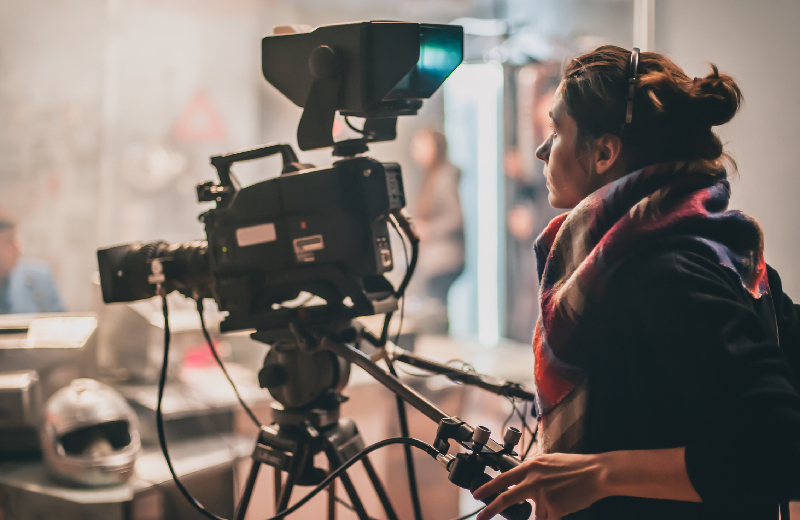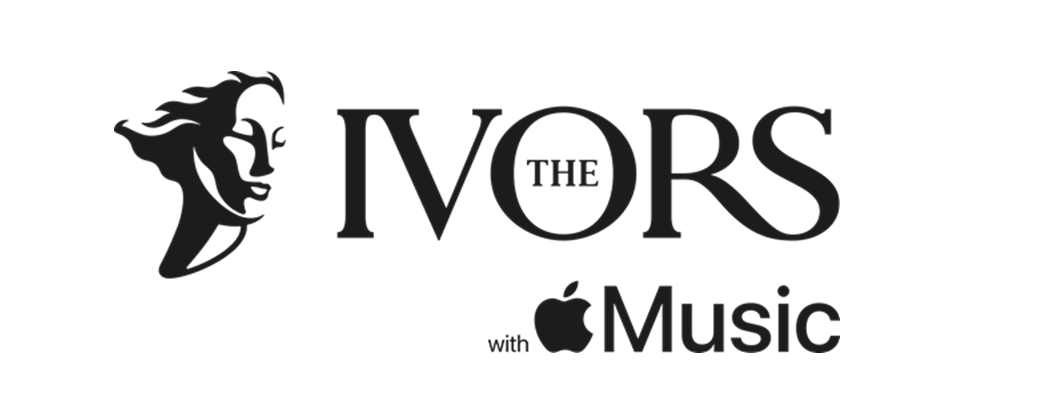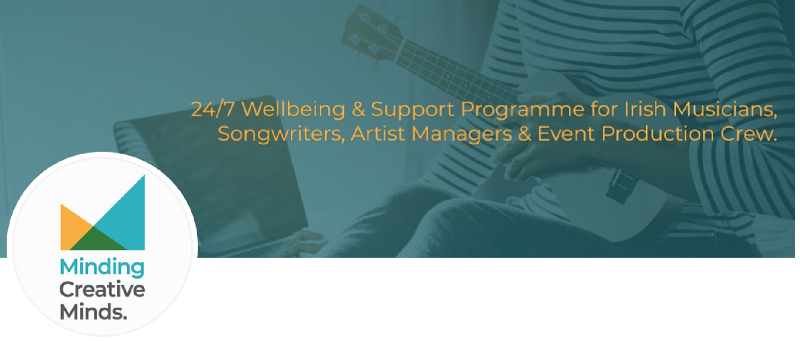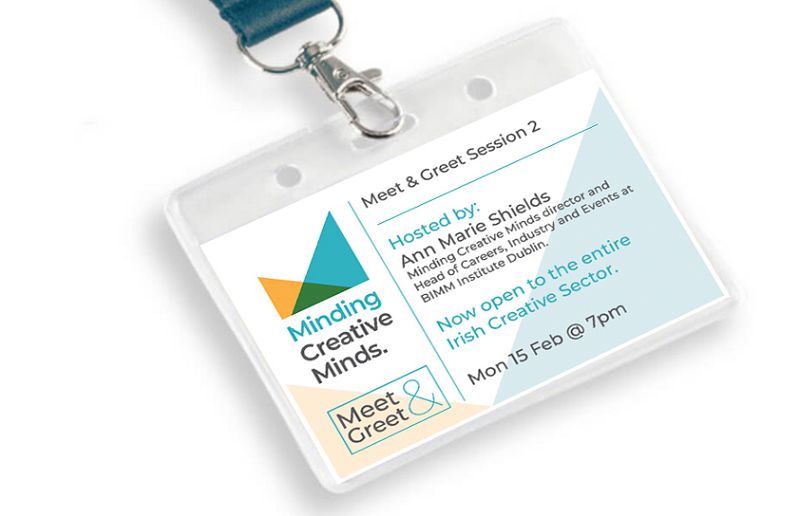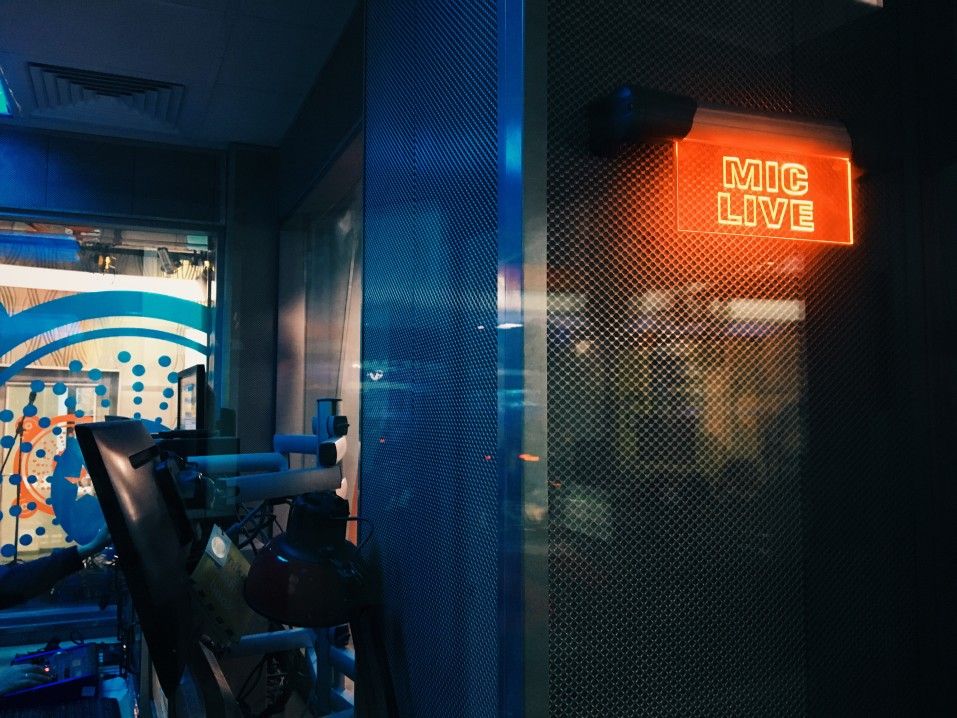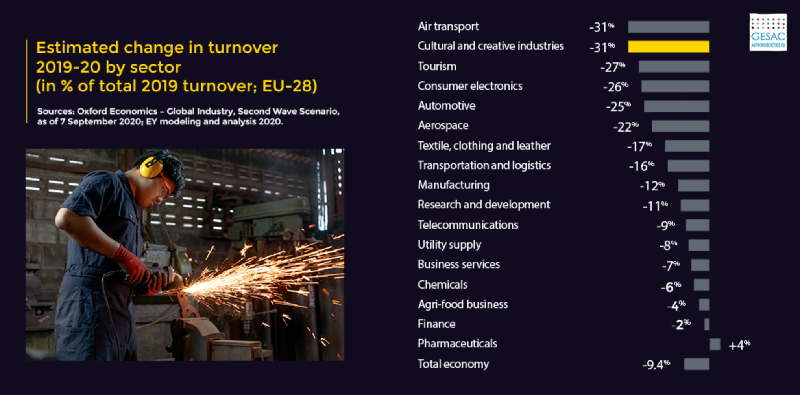Second Annual IMRO and Law Society of Ireland Copyright Lecture
16th February, 2021
The Complex Intersection between Copyright and Artificial Intelligence
Speaker:
Dr Mark Hyland, IMRO Adjunct Professor of Intellectual Property Law at the Law Society of Ireland and lecturer at the College of Business, Technological University Dublin.

Historical background
The idea of ‘a machine that thinks’ dates back to ancient Greece. But, 1950 and 1956 are two particularly significant years in the evolution of AI.
In 1950, Alan Turing, published Computing Machinery and Intelligence. Turing was an English mathematician and pioneer of theoretical computer science and AI. In his paper, Turing attempted to answer the question “can machines think?” In addition, he formulated the Turing Test to determine if a computer can demonstrate the same intelligence (or the results of the same intelligence) as a human. The value of the Turing test has been debated ever since.
The term “artificial intelligence” was actually coined in 1955 in the context of a research proposal submitted by McCarthy, Minsky, Rochester and Shannon. But, 1956 proved of particular significance as, in that year, the term was popularised by John McCarthy and Marvin Lee Minsky during their multidisciplinary summer workshop Dartmouth Summer Research Project on Artificial Intelligence. This historic workshop proved a seminal event for AI, as, from that point onwards, AI became a field of research in its own right.
What is AI?
AI is a branch of computer science. The World Intellectual Property Organization (WIPO) concedes that there is no universal definition of AI but posits that AI is aimed at developing machines and systems that can carry out tasks considered to require human intelligence. Machine learning and deep learning are two subsets of AI. In recent years, with the development of new neural networks techniques and hardware, AI is usually perceived as a synonym for deep supervised machine learning.
The UK government has defined AI as “technologies with the ability to perform tasks that would otherwise require human intelligence, such as visual perception, speech recognition, and language translation”. This definition was used by the UK Intellectual Property Office (UK IPO) in its 2020 public consultation on IP/AI.
In its 2018 Communication titled “Artificial Intelligence for Europe” (COM (2018) 237 final), the European Commission refers to AI as “systems that display intelligent behaviour by analysing their environment and taking actions – with some degree of autonomy – to achieve specific goals. AI-based systems can be purely software-based, acting in the virtual world (e.g. voice assistants, image analysis software, search engines, speech and face recognition systems) or AI can be embedded in hardware devices (e.g. advanced robots, autonomous cars, drones or Internet of Things applications).”
However, this definition was further refined by the High-Level Expert Group on Artificial Intelligence, set up by the European Commission in June, (HLEG) 2018. In its 2019 paper titled “A definition of AI: Main Capabilities and Scientific Disciplines”, the High-Level Expert Group defined AI as:
“Artificial intelligence (AI) systems are software (and possibly also hardware) systems designed by humans that, given a complex goal, act in the physical or digital dimension by perceiving their environment through data acquisition, interpreting the collected structured or unstructured data, reasoning on the knowledge, or processing the information, derived from this data and deciding the best action(s) to take to achieve the given goal. AI systems can either use symbolic rules or learn a numeric model, and they can also adapt their behaviour by analysing how the environment is affected by their previous actions.”
The WIPO Revised Issues Paper on Intellectual Property Policy and Artificial Intelligence (published, May, 2020) which formed the basis of the second and third sessions of the WIPO Conversation on IP and AI defines artificial intelligence as “a discipline of computer science that is aimed at developing machines and systems that can carry out tasks considered to require human intelligence, with limited or no human intervention”. The Revised Issues Paper also helpfully explains the terms “AI-generated” and “generated autonomously by AI”. These terms are used interchangeably and refer to the generation of an output by AI without human intervention. In this scenario, AI can change its behaviour during operation to respond to unanticipated information or events. This is to be distinguished from “AI-assisted” outputs that are generated with material human intervention and/or direction.
Acknowledging the absence of a universally accepted definition of “artificial intelligence” the recently published European Commission report “Trends and Developments in Artificial Intelligence – Challenges to the Intellectual Property Rights Framework” states that “AI can be defined as “computer-based systems that are developed to mimic human behaviour” (citing Josef Drexl et al) or a “discipline of computer science that is aimed at developing machines and systems that can carry out tasks considered to require human intelligence, with limited or no human intervention.”(citing the WIPO Revised Issues Papers on IP Policy and Artificial Intelligence (May, 2020)).
The EU’s 2020 White Paper on AI (“Artificial Intelligence – A European Approach to Excellence and Trust”) makes the pragmatic suggestion that in any new legal instrument, the definition of AI will need to be sufficiently flexible to accommodate technical progress while being precise enough to provide the necessary legal certainty. The White Paper also clarified the main elements comprising AI, namely, data and algorithms, for the purposes of possible future discussions on policy initiatives.
AI can be integrated in hardware. In case of machine learning techniques, which constitute a subset of AI, algorithms are trained to infer certain patterns based on a set of data in order to determine the actions needed to achieve a given goal. Algorithms may continue to learn when in use. The White Paper makes some particularly important points about the level of autonomy within AI. It states (at p. 16) that while AI-based products can act autonomously by perceiving their environment and without following a pre-determined set of instructions, their behaviour is largely defined and constrained by its developers. Humans determine and programme the goals, which an AI system should optimise for.
What is IP?
The term “intellectual property” refers to creations of the mind, such as inventions, literary and artistic works, designs, symbols, names and images used in commerce.
The principal intellectual property rights (IPRs) are: patents (which protect inventions), trademarks (distinctive signs that identify and protect certain goods/services produced by an individual or company), copyright (which protects original literary, dramatic, musical and artistic works) and design rights (which protect the shape or ornamentation (aesthetic aspects) of a product). IPRs are intangible assets and usually give the creator an exclusive right over his/her creation for a certain period of time.
There are important points of commonality between IP and AI. Both are ubiquitous, intrinsically linked to creation/innovation and, of particular importance to the Irish economy. But, the interface between IP and AI is a complex one and not without its tensions.
The Fourth Industrial Revolution
AI technologies, driven by big data, are fuelling the Fourth Industrial Revolution (4IR or Industry 4.0). While the 4IR is set to change society like never before, it builds on foundations laid by the first three industrial revolutions. The advent of the steam engine in the 18th century led to the first industrial revolution, allowing production to be mechanized for the first time, and driving social change as people became increasingly urbanized. In the second industrial revolution, electricity and other scientific advancements led to mass production. A third industrial revolution, beginning in the 1950s, saw the emergence of computers and digital technology. This led to the increasing automation of manufacturing and the disruption of industries including banking, energy, and communications. The 4IR is growing out of the third, but is considered a new era rather than a continuation because of the explosiveness of its development and the disruptiveness of its technologies. This new age is distinguished by the speed of technological breakthroughs, the pervasiveness of scope and the tremendous impact of new systems.
In the 4IR, there is a blurring of boundaries between the physical, digital and biological worlds. The 4IR represents a confluence of new disruptive technologies to include AI, cloud computing, robotics, block chain, 3D printing, the Internet of Things and wireless technologies. Of the aforementioned disruptors, AI is, arguably, the most potent disruptive force. From the perspectives of both society and innovation, AI is truly transformational and would not be out of place in a list of some of the world’s most important inventions/discoveries. It is not for nothing that AI is sometimes called “the new electricity”.
Growth in computing power, availability of data and progress in algorithms have turned AI into one of the most strategic technologies of the 21st century. With AI’s exponential growth, the stakes could not be higher. The way we approach AI will define the world we live in.
The Ubiquity of AI
AI is the collective force behind many products and services that are fast becoming indispensable to modern life. Think GPS systems that suggest the fastest route to a destination, voice-activated virtual assistants such as Apple’s Siri, personalized Netflix recommendations, and Facebook’s ability to recognize your face and tag you in a friend’s photo. The list does not end there. AI plays a role in self-driving cars, smart phones which suggest songs or restaurants that we might like. The translation of languages, the creation of subtitles in videos, the blocking of e-mail spam and even the spotting of cyberattacks can all be achieved by AI.
AI also helps to treat chronic diseases, reduces fatality rates in traffic accidents and assists in the fight against climate change. In Denmark, AI is helping save lives by allowing emergency services to diagnose cardiac arrests or other conditions based on the sound of a caller’s voice. In Austria, it is helping radiologists detect tumours more accurately by instantly comparing x-rays with a large amount of other medical data. Many farms across Europe are already using AI to monitor the movement, temperature and feed consumption of their animals. The AI system can then automatically adapt the heating and feeding machinery to help farmers monitor their animals’ welfare and to free them up for other tasks. These are just some of the many examples of what AI can do across various sectors. Countless more examples that cannot be imagined today will emerge over the next decade.
A strategic technology that offers efficiency and productivity gains.
AI is a strategic technology that offers many benefits for citizens, companies and society as a whole, provided it is human-centric, ethical, sustainable and respects fundamental rights and values. AI offers important efficiency and productivity gains that can strengthen the competitiveness of European industry and improve the wellbeing of citizens. It can also contribute to finding solutions to some of the most pressing societal challenges, including the fight against climate change and environmental degradation, the challenges linked to sustainability and demographic changes, and the protection of our democracies and, where necessary and proportionate, the fight against crime.
AI-based systems can be purely software-based, acting in the virtual world (e.g. voice assistants, image analysis software, search engines, speech and face recognition systems) or AI can be embedded in hardware devices (e.g. advanced robots, autonomous cars, drones or Internet of Things applications).
The Political Dimension
The political dimension of AI is apparent from the European Commission’s 2020 “White Paper on Artificial Intelligence – A European approach to excellence and trust”.
Most developed economies recognise the game-changing nature of AI and have adopted different approaches which reflect their own political, economic, cultural and social systems. The government of the United States presented an AI strategy and invested around €970 million in unclassified AI research in 2016. With its ‘Next Generation Artificial Intelligence Development Plan’, China is targeting global leadership by 2030 and is making massive investments. Other countries, such as Japan and Canada, have also adopted AI strategies. In the United States and in China, large companies are significantly investing in AI and are exploiting large amounts of data.
Overall, Europe is behind in private investments in AI which totalled around €2.4-3.2 billion in 2016, compared with EUR 6.5-9.7 billion in Asia and EUR 12.1-18.6 billion in North America. It is therefore crucial that the EU continues its work to create an environment that stimulates investments and uses public funding to leverage private investments. To do so, the EU needs to preserve and build on its assets.
The significance of AI
The significance of AI cannot be overstated. AI is bringing considerable benefits to individuals, professions (to include the legal profession), businesses, and communities across Ireland.
According to Gartner, the research and advisory company, in 2015, just 10 per cent of organisations reported that they either already used AI or would do so in the near future. But, by 2019, that proportion had risen to 37 per cent of organisations. This represents an increase of 270 per cent in the space of just four years. Most of this growth occurred during the period 2018/19 during which the use of AI in some organisations as much as tripled.
When it comes to the legal profession, automation can significantly speed up the creation, review and redaction of legal documents and precision/accuracy is not compromised in the process. Two important, time-consuming tasks in a law firm – legal research and discovery – can be achieved very effectively and considerably faster by AI. Predictive technology is also being used more and more in litigation to predict the outcome of court proceedings.
Like other countries around the world, Ireland is now developing its own national AI strategy in order to harness the opportunities presented by the exponential growth of AI and to manage its impacts. Arising out of a commitment made in Future Jobs Ireland 2019 to develop such a national strategy, the Department of Business, Enterprise and Innovation ran a public consultation process in late 2019. In it, the department sought the views of all interested parties/stakeholders on key areas and issues that should be addressed by the strategy. The department also sought views on what the guiding principles should be and how they could be used to drive the design, development and deployment of AI in Ireland.
In June last year, Ireland made a national submission to the European Commission as part of an EU-wide public consultation on AI policy and regulatory steps. Ireland’s submission was made in response to the European Commission’s 2020 white paper on AI. The white paper promotes the uptake of AI while also addressing risks associated with it. It contains policy and regulatory options, the aim being to create “an ecosystem of excellence and trust”. In response to the approximately 1,200 submissions received, the European Commission produced a final report last November.
Public Consultations on the relationship between IP and AI
WIPO
Unsurprisingly, the forum that has generated the widest international audience and most diverse views on the IP/AI intersection is the WIPO Conversation on Intellectual Property and Artificial Intelligence. Sometimes referred to as “the guardian of international IP”, WIPO is an agency of the United Nations. Based in Geneva, WIPO is the global forum for IP services, policy, information and cooperation. It has 193 member states with Ireland having joined the organisation in 1970.
Up to now, there have been three WIPO sessions on IP/AI. The first one took place in September 2019, the second in July 2020 and the third in November 2020. At the third session, the new Director General of WIPO, Mr Darren Tang, cited the 2019 WIPO Technology Trends Report, which states that nearly 340,000 AI-related patent applications have been filed since the emergence of AI in the 1950s. The document for discussion at the second and third sessions was the Revised Issues Paper on Intellectual Property Policy and Artificial Intelligence , dated 21 May, 2020 and prepared by the WIPO Secretariat.
This 15-page revised issues paper covers the main IPRs along with the following: data, trade secrets, the technology gap and capacity building, accountability for IP administrative decisions and, lastly, AI and unfair competition.
These public consultations bring together member states of WIPO and other stakeholders to discuss the impact of AI on IP. One of the principal goals of the Conversation is to help to bridge the existing information gap between AI players and regulators and to build broad awareness of the issues in the fast moving and complex field.
The UK
The UK IPO ran a public consultation on the IP/AI intersection and the future of IP and AI policy. The consultation ran from 7 September 2020 to 30 November 2020. The UK call for views covered 5 IPRs: patents, copyright & related rights, trade marks, designs and trade secrets. Respondents also had the opportunity to provide views on matters that cut across various IPRs.
The U.S.
On 31 January, 2019, the United States Patent and Trademark Office (USPTO) organised a conference on IP/AI at its headquarters in Alexandria, Virginia. The title of the conference was “Artificial Intelligence: Intellectual Property Policy Considerations”.
Building on the momentum of those discussions, on 27 August 2019, the USPTO issued a request for comments on patenting AI inventions. This was followed by another request for comments on 30 October 2019, this time concerning the impact of AI on other IP policy areas, including copyrights, trademarks, database protections, and trade secret law. The USPTO received almost 100 comments for each public consultation.
Subsequent to the public consultations, two important reports were published by the USPTO in October 2020. The first report is titled “Public Views on Artificial Intelligence and Intellectual Property Policy” and the second report is titled “Inventing AI: Tracing the diffusion of artificial intelligence with U.S. patents”. Through these reports, the USPTO provides both qualitative and quantitative analysis on the intersection between AI and IP law. The reports review current IP statutory frameworks in the U.S. as well as patent filing and grant patterns.
The IP5: AI as a strategic priority
It is interesting to note too that the five largest IP offices in the world (known as the IP5) have identified AI as a strategic priority for the near future. The IP5 comprises the European Patent Office (EPO), the Japan Patent Office (JPO), the Korean Intellectual Property Office (KIPO) the National Intellectual Property Administration of the People’s Republic of China (CNIPA) and the United States Patent and Trademark Office (USPTO). In a bid to explore the impact of AI on the patent system, the IP5 has organised a series of expert round table discussions, international symposia and international conferences on such topics as AI and IP and, patent examination practices on AI-related inventions. A good example of IP5 co-operation is the Heads of Office meeting in June 2018 where the impact of AI was explored, a common understanding of the pertinent issues promoted and discussions held about policy options for the future.
Computer-generated works
In the main, the copyright system has been designed to protect and incentivise human intellectual effort. It does this by creating a framework in which, among other incentives, authors are rewarded financially for their work when it is used by others, and those who seek to circumvent this system are penalised.
Besides Ireland, there are a number of other countries that provide copyright protection to computer-generated works in their laws. These include the UK, New Zealand, South Africa, Hong Kong and India. All these countries have a common law tradition and copyright law there follows the utilitarian theory, according to which incentives and rewards for the creation of works are provided in exchange for access by the public, as a matter of social welfare. Under this theory, personality is not as central to the notion of authorship, suggesting that a door might be left open for non-human authors.
Under our primary copyright Act, the Copyright and Related Rights Act (2000), the relevant provision is Sct 21. This provision relates to the interpretation of the term “author”. It provides as follows: “In this Act, the ‘author’ means the person who creates a work and includes (f) in the case of work which is computer-generated, the person by whom the arrangements necessary for the creation of the work are undertaken”
In the interpretations section of our 2000 Act, the term “computer-generated” (in relation to a work) is defined as follows: “means that the work is generated by computer in circumstances where the author is not an individual”.
In the UK, the issue of literary, dramatic, musical or artistic works which are computer-generated, is covered by Sct 9 (3) of their primary copyright Act, the Copyright, Designs and Patents Act (1988). It states that the author shall be the person by whom the arrangements necessary for the creation of the work are undertaken. At Sct 178 of the same Act, the term “computer generated” (in relation to a work) is defined as a work that is “generated by computer in circumstances that there is no human author of the work”.
Sct 9 (3) still raises the question: who is the person who undertakes “the arrangements necessary for the creation of the work”? But the provision does seem to generate the possibility of copyright protection for AI. Could the person who makes the arrangements be an individual who teaches the AI how to generate copyright works such as a song? While there is limited judicial consideration of the notion of “computer generated” in the UK, there is the 2007 Court of Appeal ruling in Nova Productions Ltd v Mazooma . This case concerned computer games and individual frames shown on screen during the playing of the computer game. The court ruled that the individual frames were computer-generated and that the author of these frames was the person who had devised the rules and logic used to create them. The player of the game was not the author, because they had not contributed any artistic skill or labour.
For comparison purposes, India’s Copyright Act (1957) at Sct 2 (d) defines “author” in relation to any literary, dramatic, musical or artistic work which is computer-generated as “the person who causes the work to be created”.
New Zealand too recognises that copyright works may be computer generated. Section 5 (2) (a) of New Zealand’s 1994 Copyright Act defines the author of a computer generated work as the “person” who “makes the arrangements necessary for the creation of the work”.
Interestingly, Australia has not changed its copyright laws to make reference to computer-generated works. By virtue of Sct 32 of the Copyright Act (1968), copyright subsists in original works which are authored by a qualified person, meaning an Australian citizen or a person resident in Australia.
Focusing on our Act for the moment, what does the phrase “the person by whom the arrangements necessary for the creation of the work are undertaken” actually mean?
Generally, the debate surrounding ownership of AI-generated work takes a binary approach. Could it refer to the original developer or programmer of the original codes and, if so, which ones? Or, could it refer to the user/supervisor of the AI instrument. What if the user is a customer who configures the AI or adds different inputs? An example might be a bank that configures a digital assistant to answer customer queries specific to it products/services. What about individuals who collect and collate data into meaningful, usable datasets to power the AI tool? Might they have some form of ownership claim over the AI-generated works?
There is merit in considering the original programmer as the human author and consequent copyright holder. And, all the more so when it comes to AI algorithms that are capable of generating independent work where the user’s contribution is the mere push of a button.
However the determination of the user or the computer programmer as the human author does not solve the forthcoming issue of AI generated work that is entirely independent of human contribution. As the technology develops and AI generated work becomes more autonomous it is becoming less and less clear as to who is the human author of the original work, if one even exists.
EU Legislation and case-law
Most copyright legislation across EU Member States is very much dependent on human-centred concepts, for: (i) the beneficiary of protection (i.e. the author); (ii) the conditions for protection (e.g. originality); and (iii) the rights granted (economic, but also moral rights). This human-centred focus is also present in the acquis communautaire, although arguably to a lesser extent due to the lack of regulation on moral rights.
As regards EU legislation, both the Software Directive and the Database Directive define authorship on the basis of the natural person(s) or group(s) of natural persons who created the work. This anthropocentric approach also applies for the definition of originality. Although the concept of originality is not clearly defined in European law, several directives link originality to natural persons or human attributes. The Resale Directive arguably points to persons (‘artists’) and the Copyright Term Directive points to human attributes (‘personality’). In addition, both the Software and Database Directives (as a well as the Term Directive in relation to photographs) refer to the ‘author’s own intellectual creation’ as the sole criterion to consider when assessing originality. This subjective dimension has arguably been harmonised by the Court of Justice of the European Union to all copyright-protected works in a series of landmark decisions. In these decisions, the Court refers to the ‘authors’ intellectual creation’ (Infopaq C-5/08), ‘the free creative choices’ (BSA, C-393/09), ‘the authors’ personality’ (Painer, C-145/10), or ‘the author’s personal touch’ (Dataco, C-604/10) as requirements for the emergence of a copyright-protected work. In her Opinion in the Painer case, Advocate General Trstenjak stated ‘…only human creations are therefore protected, which can also include those for which the person employs a technical aid, such as a camera’.
The U.S.
The outcome is similar under U.S. law. The U.S. Copyright Act protects original works of authorship and, to qualify as a work of authorship, a work must be created by a human being.
Under 17 U.S.C. §201, the ownership of a copyright in an original work is determined by identifying the author of a work. Specifically, the author of a work owns the rights associated with an original work of expression. Under the law, the author — and copyright-holder — is the individual (or individuals) who creates the work and fixes it in a tangible medium.
Section 306 of the Compendium of U.S. Copyright Office Practices provides that “[t]he U.S. Copyright Office will register an original work of authorship, provided that the work was created by a human being.”
As such, no software program will be recognized as an author of a copyrightable work. In particular, the Compendium proclaims that “copyright law only protects ‘the fruits of intellectual labor’ that ‘are founded in the creative powers of the mind.’” Trade-Mark Cases, 100 U.S. 82, 94 (1879). Crucially, the Copyright Office will refuse to register a copyright claim if a human being did not create the work. Burrow-Giles Lithographic Co. v. Sarony, 111 U.S. 53, 58 (1884).
One of the closest examples of a case involving copyright ownership by non-humans is the Monkey Selfie case in the United States (Naruto v. Slater 888 F.3d 418 (9th Cir. 2018)). In Naruto, a seven-year-old crested macaque monkey named Naruto allegedly took several photographs of himself with a camera owned, and left unattended, by wildlife photographer David Slater. The photographs were published in a book by Slater and Wildlife Personalities, Ltd. created through Blurb, Inc.’s website. In 2015, People for the Ethical Treatment of Animals (PETA) and Dr. Antje Engelhardt filed a complaint for copyright infringement against Slater, Wildlife, and Blurb on behalf of Naruto.
The U.S. District Court for the Northern District of California dismissed PETA’s case in 2016, and ruled that a monkey cannot own copyright under U.S. law. In April 2018, the U.S. Court of Appeals for the Ninth Circuit upheld the decision, affirming that animals cannot legally own copyright and expressing concerns that PETA was abusing the process of the courts to gain publicity.
The court elaborately distinguished between human and non-human authors of a work. Specifically, the court reasoned that since other sections of the Copyright Act, refer to “children” and “widow” for example, the statutory construction of the term “author” requires that the author must be a human being. The court also referred to the Compendium of the U.S. Copyright Office Practices which provides that “the Office will not register a claim if it determines that a human being did not create the work”. The office further states that it will exclude works “produced by machine or mere mechanical process that operates randomly or automatically without any creative input or intervention from a human author.” Given that Naruto was not deemed owner of the copyright in the photograph, it is likely that the work fell into the public domain. It would seem under the Naruto rationale that AI software could not own the copyright in AI-created works.
China: Copyright vests in AI-generated report
In early 2020, an AI-generated report on the Chinese stockmarkets was held to be entitled to copyright protection by Shenzhen Nanshan District People’s Court (Guangdong Province, China). The report had been written by Dreamwriter, an automated newswriting program developed by Tencent and released in 2015. Based on data and algorithms, the newswriting robot is reportedly capable of writing and releasing up to 2,000 finance or sports-related news pieces every day.
The plaintiff in the case, Tencent, one of China’s tech giants, had filed a lawsuit against Shanghai Yingxun Technology Co., Ltd,
In its judgment, the court commented on the reasonable structure and clear logic of the report. Importantly, the court also referred to the original nature of the report, based on the selection and analysis of data and information. Ruling that the plaintiff’s copyright had been infringed, the court required the defendants to pay 1.500 yuan (approximately $216) as compensation for economic losses caused to plaintiff.
Some concluding remarks
It is clear from the numerous public consultations referred to previously that the themes of AI and, the IP/AI interface are really focusing the minds of policymakers, legislators, lawyers and futurologists right across the world. The fact that WIPO is already planning its fourth session of the IP/AI Conversation for later this year demonstrates how important and significant AI is considered by the guardian of international IP.
One of the key conclusions of the 2020 European Commission report on AI and Challenges to the IPR framework is that fully autonomous creation or invention by AI does not currently exist and will not exist for the foreseeable future. Consequently, the report views AI systems primarily as sophisticated tools in the hands of human operators. The fact that the report’s authors decline to enquire whether AI systems should one day be recognised as a legal personality and accorded authorship (or inventorship) status is telling. Equally telling is their statement that that question should be left “to science fiction” for the time being!
Another important conclusion of the 2020 European Commission report is that current EU copyright rules are generally sufficiently flexible to deal with the challenges posed by AI-assisted outputs. This viewpoint is quite similar to the view expressed in the USPTO’s 2020 report titled “Public Views on Artificial Intelligence and Intellectual Property Policy”. In the U.S, a majority of public commentators expressed a general sense that the existing U.S. intellectual property laws are calibrated correctly across all IP topics to address the evolution of AI. A majority in the U.S. also viewed artificial general intelligence (AGI) – intelligence akin to that possessed by humankind and beyond – as merely a theoretical possibility that could arise in a distant future. Based on this view that AGI has not yet arrived, the majority of comments suggested that current AI could neither invent nor author without human intervention. The comments suggested that human beings remain integral to the operation of AI and this is an important consideration in evaluating whether IP Law needs modification in view of the current state of AI technology.
One of the key strands of the European Commission’s 2018 Strategy on Artificial Intelligence is to place Europe ahead of technological developments and encourage uptake of AI by the public and private sectors. The first review of this strategy will take place in the first quarter of this year. In addition, a draft legislative proposal on AI is also expected from the European Commission later this year.
Courts may force idiosyncratic solutions if public bodies do not identify IP policy solutions quickly enough. WIPO is expected to publish a White Paper in 2021 that may propose a definition of AI for the purposes of IP policy, which could, if agreed by WIPO member states, trickle down to national IP bodies’ approaches and find its way into legislation.

